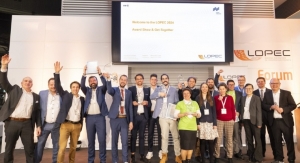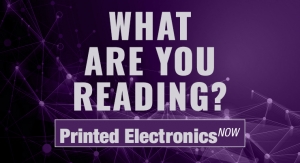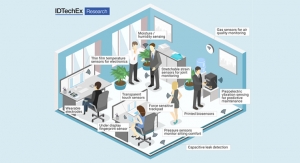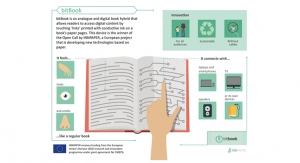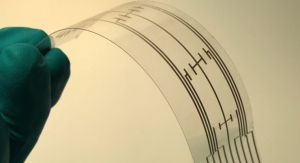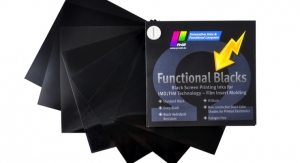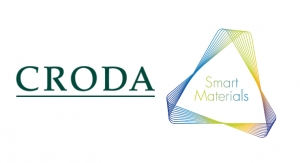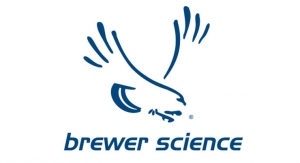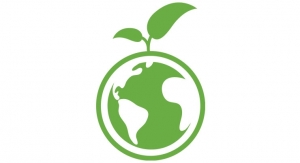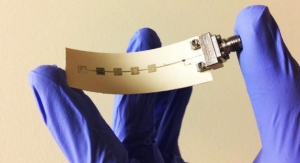06.06.18
The ability to print fine electronic circuity is critical in the field of membrane switches, which is why some of the leaders in the membrane switch field have found success in the world of flexible and printed electronics. Inno-Flex, LLC, a specialist in the world of membrane switches, is carving out a successful niche in the in-mold electronics and decorative and functional overlay segments.
Headquartered in Minneapolis, Inno-Flex initially focused on printing point of purchase market before moving into electronics.
“Inno-Flex started in 1973 as Lakeside Nameplate Company,” said Nick Strauss, director of corporate development at Inno-Flex. “Back then, we specialized mostly in screen printing for point of purchase brewery signs for Budweiser and Miller. In the early 1980s, we saw the future trend towards printed electronics and began using our screen-printing technology to break into the growing membrane switch market.”
Over the next few decades, Inno-Flex continued to expand its capabilities and leverage its technology to introduce many first to market innovations for customers. Strauss noted that Inno-Flex was the first company to make a membrane switch that could withstand temperatures of up to 105˚C; the first to create a realistic-looking metallic appearance overlay on printed plastic film; the first to implement a two-layer tail in appliance range applications to protect against silver migration; and the first to create vented membrane switch overlays to eliminate air pocket related shorting, which would become the industry standard.
By drawing on its years of experience in screen printing, Inno-Flex develops unique solutions for difficult challenges.
“At the core of Inno-Flex is our nearly 50 years of screen printing experience and know-how,” Strauss added. “We have optimized this process over years of continuous improvement to ensure quality products at efficient production levels. Our investments in automated equipment and the latest production and quality technology ensures we do it right. We complement our core screen printing technology with a mix of digital printing, advanced forming, embossing, die cutting, and adhesive application to provide a total custom solution for our customers.”
Inno-Flex serves numerous markets, providing custom control interfaces to the appliance, automotive, medical, consumer electronics, and industrial markets for nearly four decades.
“Our membrane switches, decorative and functional overlays, and in-mold decorating appliques have found their way into everything from appliances to cell phone cases to exercise equipment to electronic controls to medical devices and many others,” Strauss reported. “We primarily serve the North American market, and although we have a few international customers in China, our Mexico facility allows us to be globally competitive on price while creating a reliable and highly responsive supply chain. We feel this combination is the best of both worlds.”
In-mold electronics has become an area of significant opportunity within flexible and printed electronics, but it does come with challenges. Strauss noted that with the company’s experience, Inno-Flex is more than up to these challenges.
“From the technical side, because it is such a new space, the main focus is proving the technology is reliable for the long term through a wide gamut of resin possibilities that molders may utilize,” Strauss observed. “Like anything new, this takes time and someone willing to be a pioneer in the market. Due to our history of firsts, we feel Inno-Flex is uniquely positioned for overcoming this obstacle. But as we have experienced in the past, even once the technology has been proven with early adopters, there is still a lot of work to be done to develop the market for the mass majority of customers.”
Strauss sees plenty of opportunities ahead for Inno-Flex in the field of flexible and printed electronics.
“It definitely has its place, and at this point, it is usually a compliment to existing electronics to improve the form factor,” said Strauss. “We are hearing a lot about wearables. We also feel there are large opportunities with our customers for printed electronics to complement and accelerate their Internet of Things development. Other areas include smart logistics, especially with NFC, RFID, and sensor integration.
“We are excited about the future of Inno-Flex and the industry in general,” Strauss added. “We know if we can continue to provide our unrelenting customer service and commitment to technology development, that we will be able to serve our customers for years to come. It is a very exciting time for our industry and as collaborative development between printers, material suppliers, and manufactures continues, the future should be bright.”
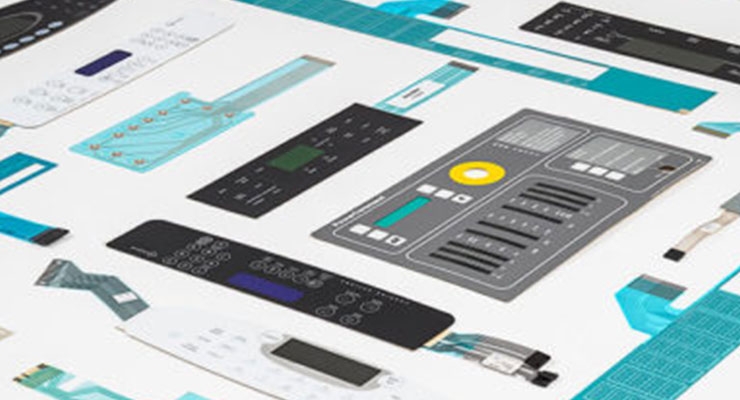
Source: InnoFlex, LLC.
Headquartered in Minneapolis, Inno-Flex initially focused on printing point of purchase market before moving into electronics.
“Inno-Flex started in 1973 as Lakeside Nameplate Company,” said Nick Strauss, director of corporate development at Inno-Flex. “Back then, we specialized mostly in screen printing for point of purchase brewery signs for Budweiser and Miller. In the early 1980s, we saw the future trend towards printed electronics and began using our screen-printing technology to break into the growing membrane switch market.”
Over the next few decades, Inno-Flex continued to expand its capabilities and leverage its technology to introduce many first to market innovations for customers. Strauss noted that Inno-Flex was the first company to make a membrane switch that could withstand temperatures of up to 105˚C; the first to create a realistic-looking metallic appearance overlay on printed plastic film; the first to implement a two-layer tail in appliance range applications to protect against silver migration; and the first to create vented membrane switch overlays to eliminate air pocket related shorting, which would become the industry standard.
By drawing on its years of experience in screen printing, Inno-Flex develops unique solutions for difficult challenges.
“At the core of Inno-Flex is our nearly 50 years of screen printing experience and know-how,” Strauss added. “We have optimized this process over years of continuous improvement to ensure quality products at efficient production levels. Our investments in automated equipment and the latest production and quality technology ensures we do it right. We complement our core screen printing technology with a mix of digital printing, advanced forming, embossing, die cutting, and adhesive application to provide a total custom solution for our customers.”
Inno-Flex serves numerous markets, providing custom control interfaces to the appliance, automotive, medical, consumer electronics, and industrial markets for nearly four decades.
“Our membrane switches, decorative and functional overlays, and in-mold decorating appliques have found their way into everything from appliances to cell phone cases to exercise equipment to electronic controls to medical devices and many others,” Strauss reported. “We primarily serve the North American market, and although we have a few international customers in China, our Mexico facility allows us to be globally competitive on price while creating a reliable and highly responsive supply chain. We feel this combination is the best of both worlds.”
In-mold electronics has become an area of significant opportunity within flexible and printed electronics, but it does come with challenges. Strauss noted that with the company’s experience, Inno-Flex is more than up to these challenges.
“From the technical side, because it is such a new space, the main focus is proving the technology is reliable for the long term through a wide gamut of resin possibilities that molders may utilize,” Strauss observed. “Like anything new, this takes time and someone willing to be a pioneer in the market. Due to our history of firsts, we feel Inno-Flex is uniquely positioned for overcoming this obstacle. But as we have experienced in the past, even once the technology has been proven with early adopters, there is still a lot of work to be done to develop the market for the mass majority of customers.”
Strauss sees plenty of opportunities ahead for Inno-Flex in the field of flexible and printed electronics.
“It definitely has its place, and at this point, it is usually a compliment to existing electronics to improve the form factor,” said Strauss. “We are hearing a lot about wearables. We also feel there are large opportunities with our customers for printed electronics to complement and accelerate their Internet of Things development. Other areas include smart logistics, especially with NFC, RFID, and sensor integration.
“We are excited about the future of Inno-Flex and the industry in general,” Strauss added. “We know if we can continue to provide our unrelenting customer service and commitment to technology development, that we will be able to serve our customers for years to come. It is a very exciting time for our industry and as collaborative development between printers, material suppliers, and manufactures continues, the future should be bright.”

Source: InnoFlex, LLC.

